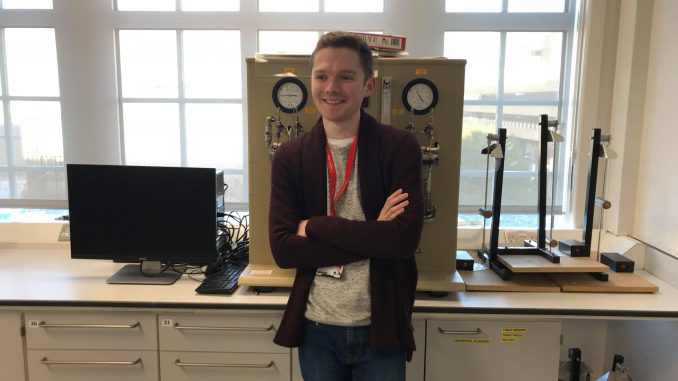
By Matt Lane, PhD Cross-disciplinary Approaches to Non-Equilibrium Systems, Department of Physics
As a theorist, I spend a third of my time reading, a third with a pen and paper, and a third programming. That’s a lot of time at my desk, aided by a continuous stream of strong coffee and surrounded by colleagues who have become firm friends. But what do I actually do? This is the perennial question of the PhD student suffering from imposter syndrome. We all wonder what we’re really doing from time to time, but all you have to do is discuss your work with someone else for five minutes and they’ll tell you that your research is incredible. The lesson here? Research is a collaborative exercise, both intellectually and emotionally. And in that spirit, let me tell you a little bit about mine.
The quantum mechanics of Schrodinger and Heisenberg, the brand that we teach to undergraduates, is a description of single particles. There is no coupling to an environment, no thermal bath, no ensemble over which to average. This is a very limited theory indeed, since every quantum system is really embedded in the world. Modern experiments are only just managing to prepare and observe such systems. But arguably more important is the Physics of open quantum systems.
Open quantum systems are ones which are coupled to their surroundings. They experience decoherence due to the continuous observation of the system by its environment, are mathematically intractable due to the excessive number of degrees of freedom, and signify the blurring between atomic scale physics (the quantum) and thermodynamics (the classical). And this is made more complicated by these systems being non-equilibrium, meaning that the methods of traditional statistics break down.
But this is how the world is.
You don’t like it? Go somewhere else! To another Universe, where the rules are simpler, philosophically more pleasing, more psychologically easy. Richard Feynman, Douglas Robb Memorial lectures, 1979
And if we want to understand real physical systems, this is the physics we need to develop. Adjacent quantum states in a biological molecule connected by tunnelling? That’s an open quantum system. A qubit experiencing damaging decoherence due to its environment? That’s an open quantum system. A fully quantum description of an electron interacting with a photon field? Sounds like it should be isolated quantum mechanics, but no, that’s an open quantum system too.
Using Green’s functions and path integrals, we have been able to encode the interactions with the environment in a set of complex correlation functions, allowing us to derive equations for the dynamics of stochastic quantum density matrices. Averaging over many realisations of this dynamics allows us to recover the thermalisation of the physical system with its environment and its subsequent evolution in time. Does this spell an end for single particle quantum mechanics? Absolutely not. But it might allow us to understand how the environment affects the exact dynamics of our quantum systems, which could help us design better environments for qubit systems in quantum computers.

Leave a Reply